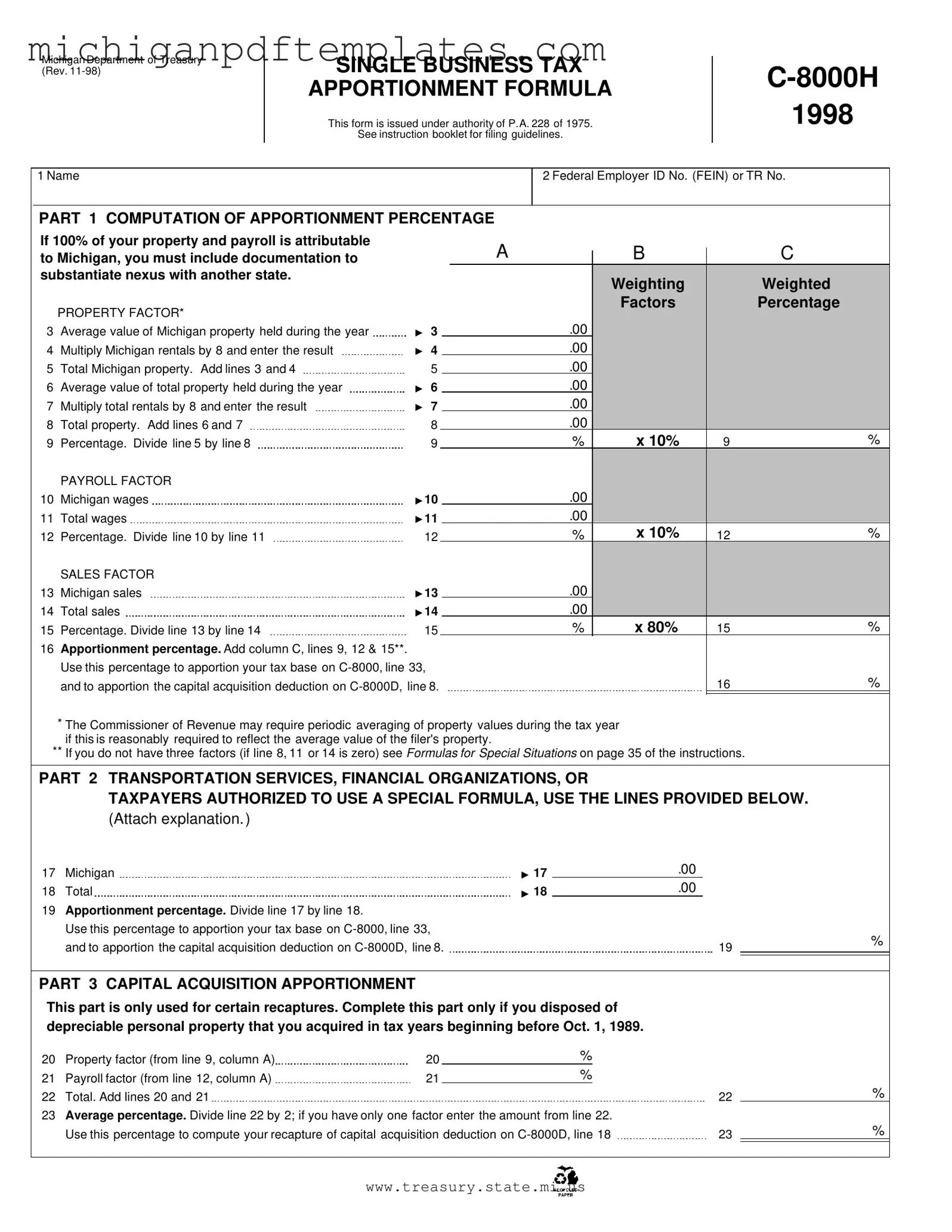The Michigan C 8000H form plays a crucial role for businesses operating within the state, particularly in determining how to fairly allocate their tax obligations. This form is specifically designed for the Single Business Tax Apportionment Formula, which helps businesses calculate their apportionment percentage based on property, payroll, and sales factors. Understanding this form is essential, as it allows companies to accurately report their financial activities in Michigan while ensuring compliance with state tax laws. The C 8000H includes several parts, each focusing on different aspects of the apportionment process. For instance, Part 1 guides users through the computation of the apportionment percentage by evaluating the average value of property and payroll in Michigan compared to total values. Additionally, it incorporates specific factors that affect the weighting of property and payroll, which ultimately influence the overall tax liability. Other sections of the form address unique situations, such as transportation services or financial organizations that may require a special formula. Furthermore, the form includes provisions for capital acquisition apportionment, particularly for businesses that have disposed of depreciable property acquired before a certain date. Understanding the nuances of the C 8000H form can greatly benefit businesses by ensuring they are meeting their tax obligations accurately and efficiently.
